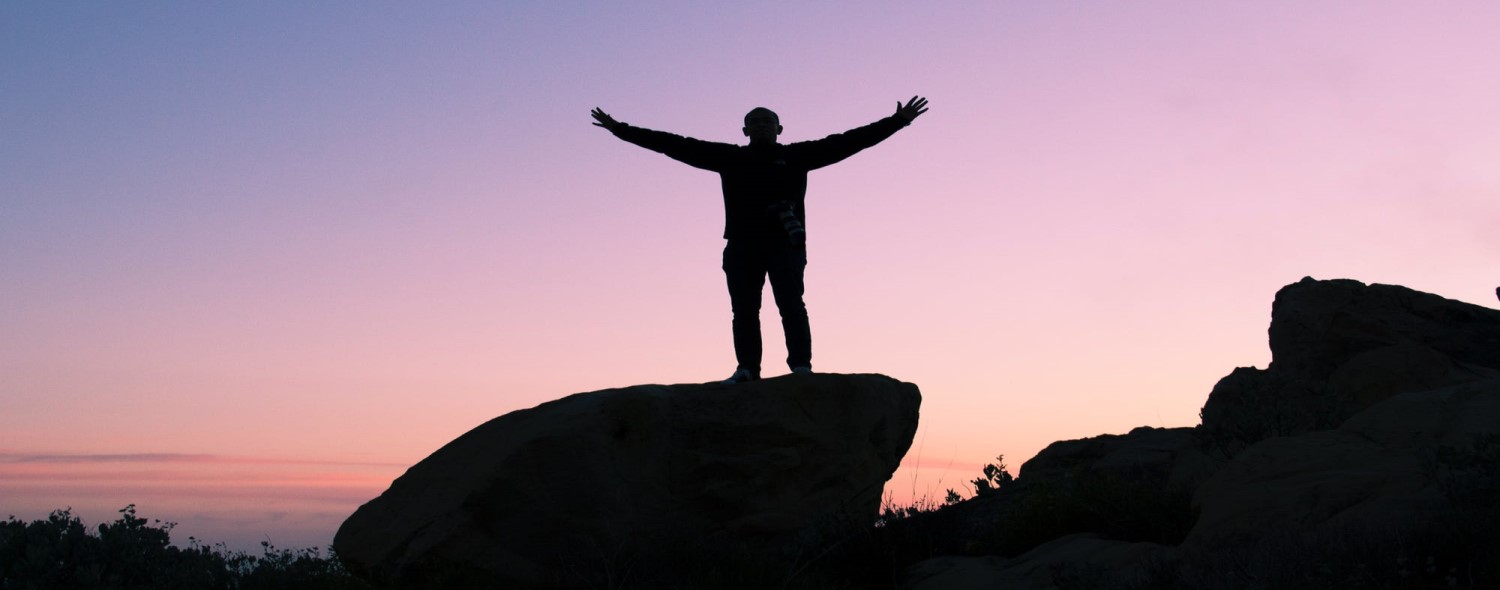How to Practice Gratitude and Get a Gratitude Adjustment!
I started today the same way I start every other day – by writing down the 3 things I am most grateful for in my life. Each day is a different three things and it really helps set the tone for a great day. The first thing I was grateful for today was that I had the opportunity to speak to both of my parents yesterday as well as my mentor Howie who all inspire me in different ways. The second thing I was grateful for was that I was able to tailgate and attend a football game with my friends over the weekend. The third thing I was grateful for? Well, you will have to wait until the end of this post to find out!
Before we get into gratitude and how to practice gratitude.
Let’s do a little exercise…
….and either write down or think of some words related to positive emotions.
Some of the words you may have come up with are some of the ones I did, words like happiness, bliss, joy, exhilaration, glee, thankful. You may have also had one such as appreciative or grateful. All of these are positive emotions and while they ‘seem’ great – what good are they and how can they help us?

To understand the benefits of positive emotions, let’s take a look at the work of Dr. Barbara Fredrickson from the University of North Carolina who has studied the science of positive emotions. More specifically, we need to explore her theory which is called…
The Broaden and Build Theory of Positive Emotion
The work of Dr. Fredrickson shows that the positive emotions that we listed above broaden our thinking while helping us to be more cognitively flexible and creative. On the other hand, negative emotions narrow our thinking. So, think about the last time you were pissed off, you were probably focused on and ruminating about whatever it was you were pissed off about. Your thoughts were likely centered on protecting yourself, fighting back or defending yourself – your attention was narrowed. Dr. Fredrickson and her colleagues have done a bunch of studies showing those in a positive state were able to come up with more creative solutions to problems than those in a neutral or negative state.
Ok, so that is the broaden part of her theory – positive emotions broaden our thinking and creativity.
Now for the build part of her theory, the fact that positive emotions cause us to build resources. They help us to have better relationships and have greater resilience. According to Dr. Fredrickson, when we are in a happy or joyful state it makes us want to play and when that happens we build more skills and connections to others. For example, if you are feeling curious it will cause you to find stuff out which will build intellectual skills. Or if you feel serene or content, it will cause you to relax and rest which will help you recharge and build up your energy levels and physical resources. Dr. Fredrickson did some other interesting studies that showed positive emotions can help build resources by undoing many of the physiological effects of negative emotions such as anger or anxiety as well.
Now that we have learned some reasons for the benefits of positive emotions, let’s take a closer look at one of them in particular – gratitude and specifically how to practice gratitude. The leader in the field whose name is synonymous with the science of gratitude is a fellow out of UC-Davis named Dr. Bob Emmons.
Dr. Emmons notes that…
There Must Be a Clear Distinction Between…
The short-term feeling of being grateful versus a quality, trait or disposition that someone carries inside of themselves.
So, you can almost think of gratitude as a continuum.
On the one end, being grateful is a short-term warm emotion or feeling that you get when someone does something nice for you or when you receive something.
On the other end, being a grateful person is more of a long-term state of being or trait where you habitually look at life through a lens of gratitude of being thankful for life – almost as a fundamental life orientation.
Dr. Emmons’ and others research on gratitude shows a multitude of…
Benefits of Gratitude
Some of which are:
Better sleep – by thinking of good things you are not ruminating on the bad which will make you calmer and able to fall asleep better.
Better relationships – the more thankful you are to others in your life, the more solid your relationships with them will be.
Pay it forward – when you think about someone doing something nice for you it may inspire you to do something for someone else,
More opportunities – by focusing on the good it opens us up to more opportunities and possibilities, which brings contentment and peace.
Block negative emotions – gratitude can help us block negative emotions as it gives us a process to offset the negativity in our lives. It gives us a perspective to view negativity and adversity in the context of everything else that is going well in our lives. It allows us to focus on the ways our lives are going well and how we are supported by others.
Other benefits – according to Dr. Emmons some additional benefits of gratitude other than the ones above are that you feel psychologically more alive, alert and enthusiastic, you are more attentive and notice stuff you haven’t noticed before, shorter and some may experience lower blood pressure and cholesterol levels. 1
Oh – One More Benefit – Dopamine
If you read my recent post on gamification, you will remember that one of the ways that games work so well is that we are rewarded for doing something which releases a chemical in our brain called dopamine which makes us feel good. Interestingly, an NIH study in 2009 showed that practicing gratitude lights up the same reward pathways in our brain and the hypothalamus which activates the brain stem to produce dopamine!
Ok, now that we know about the science of gratitude and why it is important, let’s look at some ways for…
How to Practice Gratitude
As Dr. Emmons says, “one size does not fit all, it is not a list of things you do!” in terms of how to practice gratitude.
That being said – I am going to listen to the good doctor and not give you a list of things to do! Rather, I will give you some of his suggestions on how to practice gratitude, as well as some other best practices, that way you can figure out what works for you!
So, here we go, a few different gratitude practices for you to try!
The 3 good things exercise:
When you wake up or before you go to bed, simply reflect on 3 things you are grateful for, focus on them and write down in detail and why you are grateful for them. Perhaps do this in a gratitude journal!
The Stop, Look, Go technique:
Stop: And become present, awake, aware, and receptive to what is going on.
Look: Notice and observe at the way others are supporting you and doing things for you that you could never do for yourself. (for example, those who are making you safe or ensuring you have clean drinking water). How can you look at that and not be grateful?
Go: doing something about it, write about it or tell someone about it or thank someone for it.
Getting over a bad experience:
According to Emmons, “if you have had a bad experience – you may need to achieve distance from it first. You cannot deny it, you need to acknowledge the loss, disappointment, pain and so on. Then at some point, now what? How can you recast this loss into a positive gain? It may take time, it could take weeks months and years depending on the magnitude of loss – but knowing that the possibility exists gives us hope we can get through it.” 1 So, look at something bad that has happened and look at where you are now, and how have you grown because of that event. This is a great way to create gratitude in the moment. Almost as a reset button to look at the possible benefits of a situation when bad things happen.
Link it:
To something you already do in your life! If you read my blog post on how to create a habit, you will have learned that linking habits to other habits or ‘habit stacking’ is a great way to create a habit. In this case, link or stack your gratitude habit to something else in your life like having a cup of coffee or brushing your teeth, etc.

Before We Go…
You may be wondering about the 3rd thing I was grateful for this morning? Well, it’s easy – it is YOU the reader! I am very grateful that you have taken the time to read our blog! I am also grateful to those who regularly read, comment, like and share either on the blog or on Facebook, LinkedIn, Twitter, and Pinterest. There are too many of you to name individually and I don’t want to leave anyone out. But you know who you are and please know that I am extremely grateful for you all.
Until next time, thanks again for reading, have an attitude of gratitude, and as always…PYMFP!
–Rick
Use It or Lose It – How to Practice Gratitude:
If you are looking for ways on how to practice gratitude you may want to try one of the practices we discussed above:
 The 3 good things exercise
The 3 good things exercise
 The Stop, Look, Go technique
The Stop, Look, Go technique
 Getting over a bad experience
Getting over a bad experience
 Link it
Link it
When to Use It:
Whenever it makes sense, some people do it at the start of their day, some people do it at the end of their day. Personally, I do it both at the start and end of my day as it is a great way to start your day in a great mood and end it in a great mood.
How often to do it? Dr. Emmons uses the analogy of working out or eating right. The more you do it the quicker the benefits will accrue, and if you stop…
As he says, ‘it has to be attentionally and intentionally implemented’.
What Do You Think?
Do you consider yourself a grateful person? Do you have any other suggestions on how to practice gratitude? Please share in the comments below!
If you enjoyed this post, it would mean the world to us if you shared it with people you care about via any of the social media platforms below!
Popular Previous Posts:
Why You Should Never Go to Bed Angry!
This is What Flip Cup Taught Me About Critical Path
This is Why the 12 Laws of Karma Definitely Aren’t a B****!
3 Popular Note-Taking Methods You Need to Make a Note Of!
This is How to Use Gamification to Make Boring Tasks Fun!
References
1 http://www.brainsync.com/blog/dr-robert-emmons-the-importance-of-gratitude/
https://www.coursera.org/learn/positive-psychology-resilience/home/week/3
https://www.ncbi.nlm.nih.gov/pmc/articles/PMC3122271/
http://www.dailygood.org/story/532/how-gratitude-can-help-you-through-hard-times/



Great post Rick! I really resonated with one of your last points, the one about thinking of something bad that has happened and where I am now. Although I wish that “bad” thing never happened to me, I know that if it didn’t, I wouldn’t be where I am today. It taught me to not sweat the small stuff and to appreciate everything a little more. I am grateful for you writing this post… I needed it!
Hi Nicole, thanks for reading and commenting, we sincerely appreciate it! I think it’s awesome that you were able to reflect and have the self-awareness to apply that point to your personal life – that is exactly the point and what we hope people will do, that’s how we learn! Good stuff! Take care, Rick
Love this message! I am grateful for so many things especially my three wonderful children and my own siblings. Thanks Rick
Thanks for reading and commenting. We all have a lot to be grateful for!
Good morning Rick. I took me a while to sort through today’s commentary, and I’m still not sure that I understand it, which is probably my fault, not yours. I am grateful for many things, both tangible and intangible – my cute blonde, our daughter and grand-daughter, my relatively good health for my age, the fact that we have been debt free for 15 years and the fact that we really have no long term worries or concerns. I suppose that puts us in the minority.
You make the statement “if you are feeling curious it will cause you to find stuff out which will build intellectual skills”. So very true. I have been researching and writing my grand-daughter’s ancestry, so far have written 9 volumes and am working on the tenth. Based on what I have learned, I developed a serious interest in medieval history, and just finished researching my blonde’s namesake, Queen Joan of France, wife of King Phillip IV. Incidentally, she is an ancestor. I will explore that line in detail once I finish my current project, the link to Lady Godiva of Coventry, my 24th great-grandmother. So yes, I am grateful for having the time and resources to accomplish my research, plus the benefits from learning about these people’s lives instead of them being just names on a sheet of paper.
You mention Bob Emmons. Although I never heard of him, we are related, as I have five generations of Emmons in my past.
Anyhow, that’s my take on gratitude. I hope it matches up at least some of what you are trying to convey.